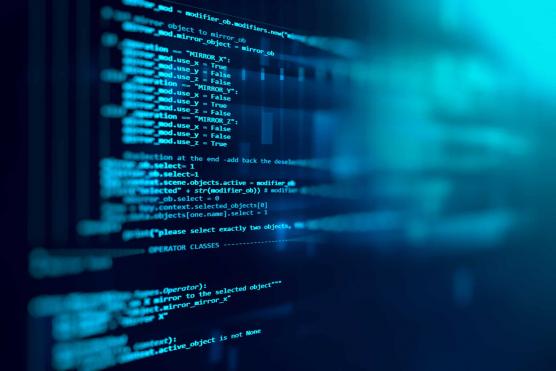The field of data science and analytics is popular and in demand nowadays. Businesses can make smarter decisions using data analysis to maximize their potential. The data must be obtained, purified, and examined to glean insightful information. Data analysts use the best programming languages to extract information from structured and unstructured data.
Data analytics is a scientific field that uses procedures and algorithms to understand customers' wants. You can learn everything you need about the most widely used programming language for data analysts from this blog.
Data analysis: What Is It?
Raw data must first be modified, cleaned, and processed before being used in data analysis. In order to make informed decisions, it also extracts relevant information from the data. Data analysts offer a risk analysis that aids businesses in choosing the best course of action based on trends. The analysis's findings are presented in tables, charts, graphs, and graphics, along with useful information and insights.
Programming Languages: What Are They?
Computers receive instructions from programming languages. Compared to low-level programming languages, high-level programming languages are often more user-friendly and simpler to read and write. High-level languages use syntax that is simple to read in their source code.
This is transformed into a basic language that the computer can understand. The high-level languages C, C++, Java, and JavaScript are widely used. Processors can execute low-level languages without the aid of an interpreter. They are computer languages that the machines themselves can understand. Master these languages by taking up the best data analytics courses trending in the market.
Which Programming Languages Are Applied by Data Analysts?
Programming languages come in a wide variety, but some are more suited to data analysis than others. The most popular programming languages for data analytics are Python and SQL. Some analysts can use R for statistical computation, statistical analysis, and numerical analysis.
Python:
The popular language Python is great for data analysis. This multifunctional, object-oriented language is easy to read and efficient for processing data. It can be used to build webpages, code programs, and extract information.
You might need to obtain libraries if you want to use Python for this purpose because doing so will require less writing. The programming language is user-friendly for beginners and has many applications. However, setting it up for data analysis can take some time.
SQL:
Users may interface with relational databases, conduct searches inside them, and gather data using SQL, a potent scripting language. It is a well-known programming language for data science that has an understandable syntax and is simple to learn because it was created with a specific objective in mind. Since SQL is efficient at manipulating data, it can be used to assess business data.
R:
The main language used in data science for analysis is called R. Finding trends and patterns in your data is made possible by this simple language, which is easier to learn than Python and doesn't need as many additional libraries. It can be used to produce stunning statistical models or data displays.
R offers statistical packages for quantitative applications, which is why data analysts utilize it. They consist of nonlinear regression, phylogenetics, neural networks, and advanced charting. R is another open-source language made to be flexible.
JAVA:
Using the Java Virtual Machine, the general-purpose language Java can be used (JVM). This high-performance language provides effective tools for incorporating data science and analytical techniques into a codebase. Today, the Java backend is used to build many contemporary systems. It is essential to use this language for data applications.
Java allows for smooth platform portability. This enables it to create specialized production codes and computationally demanding ML algorithms. For specialized statistical applications and ad hoc studies, it is perfect.
Scala:
Programming in Scala combines functional and object-oriented principles. Many data analysts, especially those who work with huge volume data sets, prefer to utilize the multi-paradigm language because it operates on JVM.
The cluster computing framework, Apache Spark, works nicely with Scala. This makes handling large data sets simple. The Java bytecode compiles Scala, allowing it to interact with Java. Data analysts and data scientists can take advantage of its many features.
Which programming language should be mastered first?
The first programming language created was Python, which you should master if you want to become a data analyst. Its ease of use makes it one of the most widely used programming languages. Python is an object-oriented language by nature while being a general-purpose language. It supports a variety of paradigms, including structured, functional, and procedural programming.
These characteristics make it valuable not only for data analysis but also in other contexts. The language is quicker for data manipulation because it contains fewer than 1,000 iterations. Natural data processing is also made simple by its packages. Analysts can quickly read data from a spreadsheet using data analytics.
Is Choosing the 'Wrong' Programming Language a Possibility?
Some people are concerned about wasting time and effort by using incorrect language for data science. There is no such thing as incorrect language, though. The majority are great languages to list on your resume. Whatever you decide to learn will be useful in the tech industry.
Learning Data Analysis:
Data analysis takes time to master. This is because you must learn specific subjects to get ready for the workforce. You can sign up for an online data science certification course or coding Bootcamp. You can progress from learning the fundamentals of data analysis to more difficult issues with the aid of these programs.
Study the fundamentals:
Understanding the principles is the first step in understanding data analysis. In order to generate stunning visualizations, you also need to learn data analysis tools like Hadoop, Spark, and Microsoft Excel, computer languages like R and Python, tableau, and ggplot2.
Programming Language Education:
After mastering the fundamentals, concentrate on one programming language. Python, SQL, and R are the three most used programming languages for data analytics. Both are good and bad. Additionally, you must stay current with data analysis tools like spreadsheets and querying languages.
Develop your building visualizations:
You can perfect what you have learned so far by practicing. For this phase, you must use applications like PowerBi, Tableau, Plotly, Bokeh, and Infogram. Start creating visualizations independently to explore how you can use what you have learned. Additionally, tools like Excel are crucial since they enable you to create calculations and graphs by entering data into the cells.
Ready to Enter the Tech Industry?
Data analysis is a vital industry that aids companies in outpacing their competitors by reducing the hazards of making ill-informed decisions in this field. You need to deal with specific programming languages to examine data. Due to its usability and other advantages, Python is one of the preferred first languages to learn.
You can learn more programming languages to use for data analysis. SQL, Scala, Java, and R are a few of them. Understand the principles, and a programming language, practice creating visualizations and join training to learn with an IBM-accredited data science course with placement, designed to meet industry demands.
















